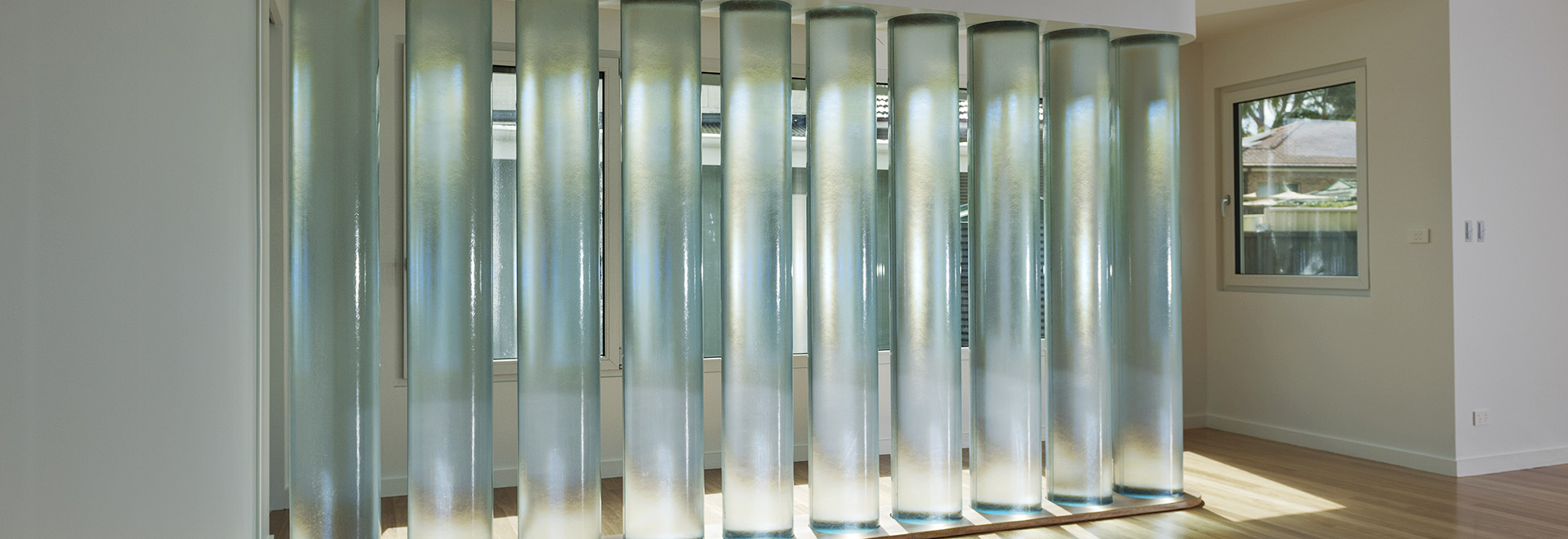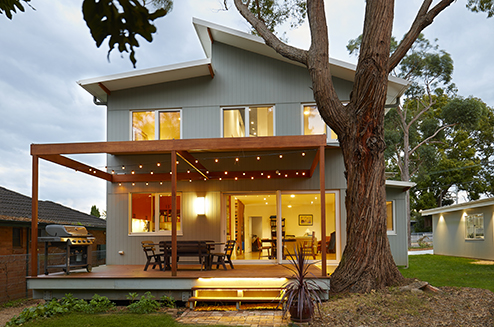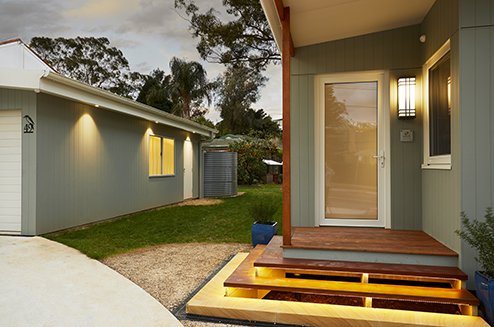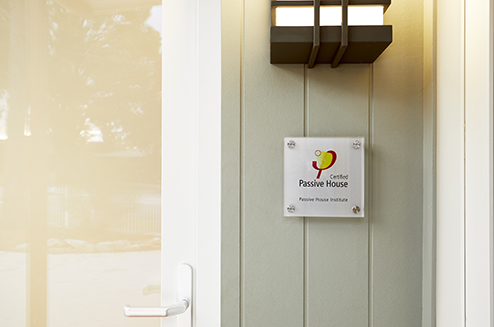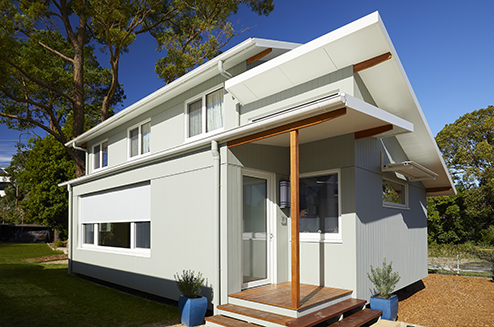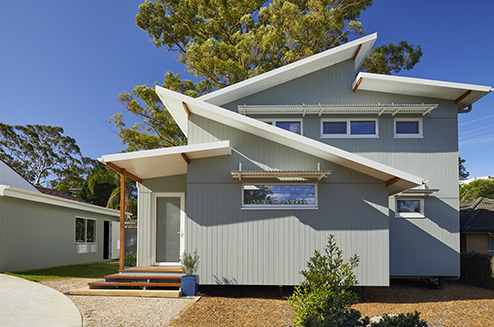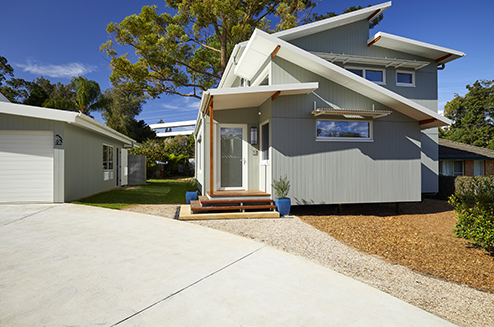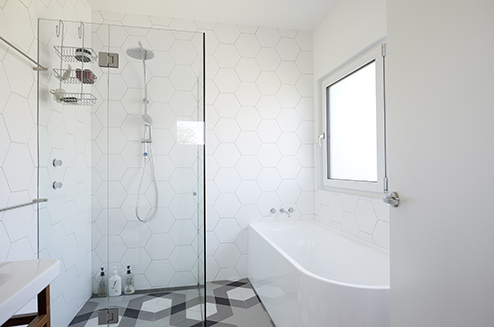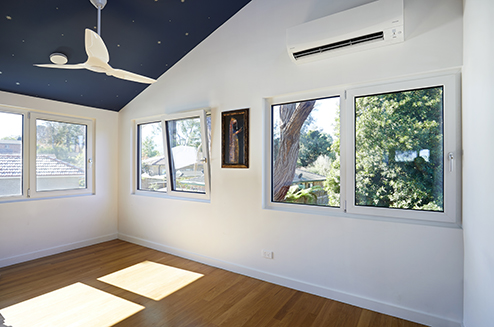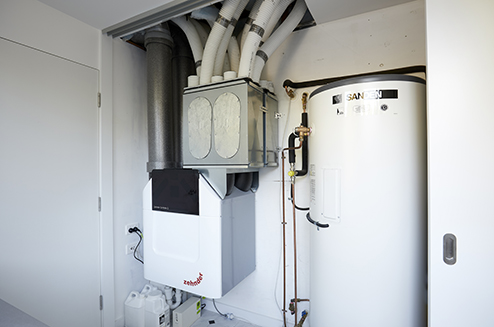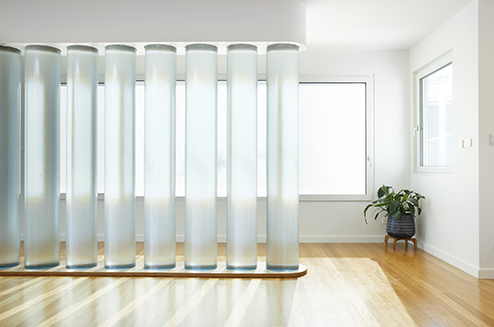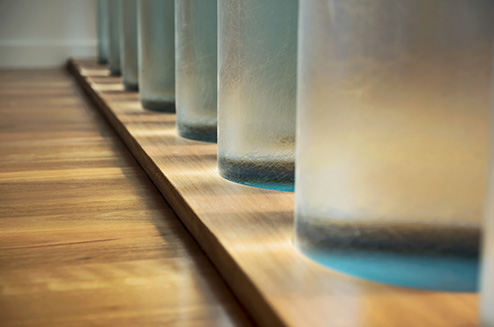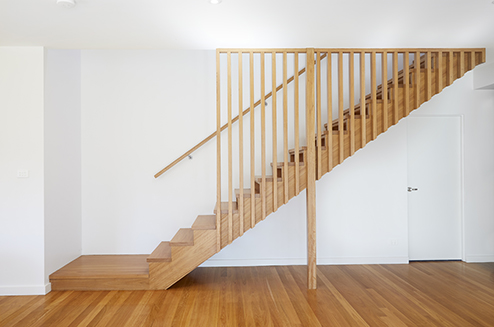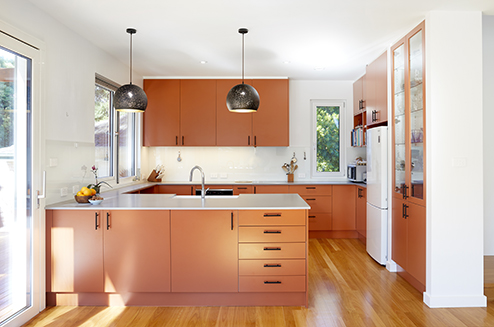Thornleigh Passivhaus
Sydney’s first certified Passive House!
This compact two-storey home replaces a defunct cottage. Nestled in between a busy road, a magnificent tallowwood and a train line the home will offer a haven of peace and quiet.
The insulated, air tight construction with heat recovery ventilation (HRV) system provide superior indoor air quality without the need to open windows (but you can if want).
Project Details
The building form responds to the sun path across the site, maximising solar gain for winter while providing high levels of shade to keep cool in the summer months. The large north facing roof allows for a significant photovoltaic system, sufficient to be energy positive over the year.
The living spaces are orientated to enjoy the view of the tallowwood tree that is at the geometric heart of the site. The large ‘lift & slide’ doors provide an intimate connection to the rear yard and the deck wrapping the tallowwood. This seamless flow will work well when the weather permits and still ensure the visual connection when the weather is less accommodating.
The structure is a direct response to site conditions and the desire to preserve the tallowwood. The raised structure protects the root zone of the tree, and is thus lightweight, lacking thermal mass. This is less significant in a passivhaus than in passive solar however, as thermal mass still provides positive benefits the house has 10 internal water tanks to assist in regulating internal temperature.
The tanks act as a room divider, framing the entry, while also capturing the sun through a huge north facing window that has a retractable shading blind for summer sun control. The tanks will be filled after construction and are not connected to the other rainwater tanks, as the temperature of rainwater can be problematically low and poses a condensation risk if put straight into the building.
The house is compact with three bedrooms, a study/guest room for overseas parents and two bathrooms (no ensuite). The laundry houses the HRV and hot water tank as well as the usual functional items.
The cost-effective windows are uPVC with an aluminium external skin. Imported, they come triple glazed as standard – double glazing would be a special order and add cost!
The construction methodology allows for on-site construction while reducing the risk of damaging the air tight membrane. The final blower door test yielded a result of 0.35ACH50. This is well within the Passive House limit of 0.6ACH50 and compares favourably with the average for a new Australian home of 15.4ACH50; 44 times less leaky!
At the 2020 Building Designers Association of Australia National Design Awards, the Thornleigh Passivhaus was the winner in the New Residential category (up to 250m2). See our other award winning projects here.
Hear directly from the clients (and get a tour):
See our other videos here
See all our sustainable house designs here.
Team
Landscape Architect: Elke Haege Thorvaldson
Builder: Red Cedar Constructions
Photography by Petri Kurkaa and Brandee Meier
Client Quote:
“Building any house is a huge investment, building ours was the biggest investment of our lives. Passive House is a performance standard, and having the house certified meant having an expert verify that the house designer and builder had designed and built the house we had paid for! The cheapest insurance I’ve ever purchased and worth every cent.”

